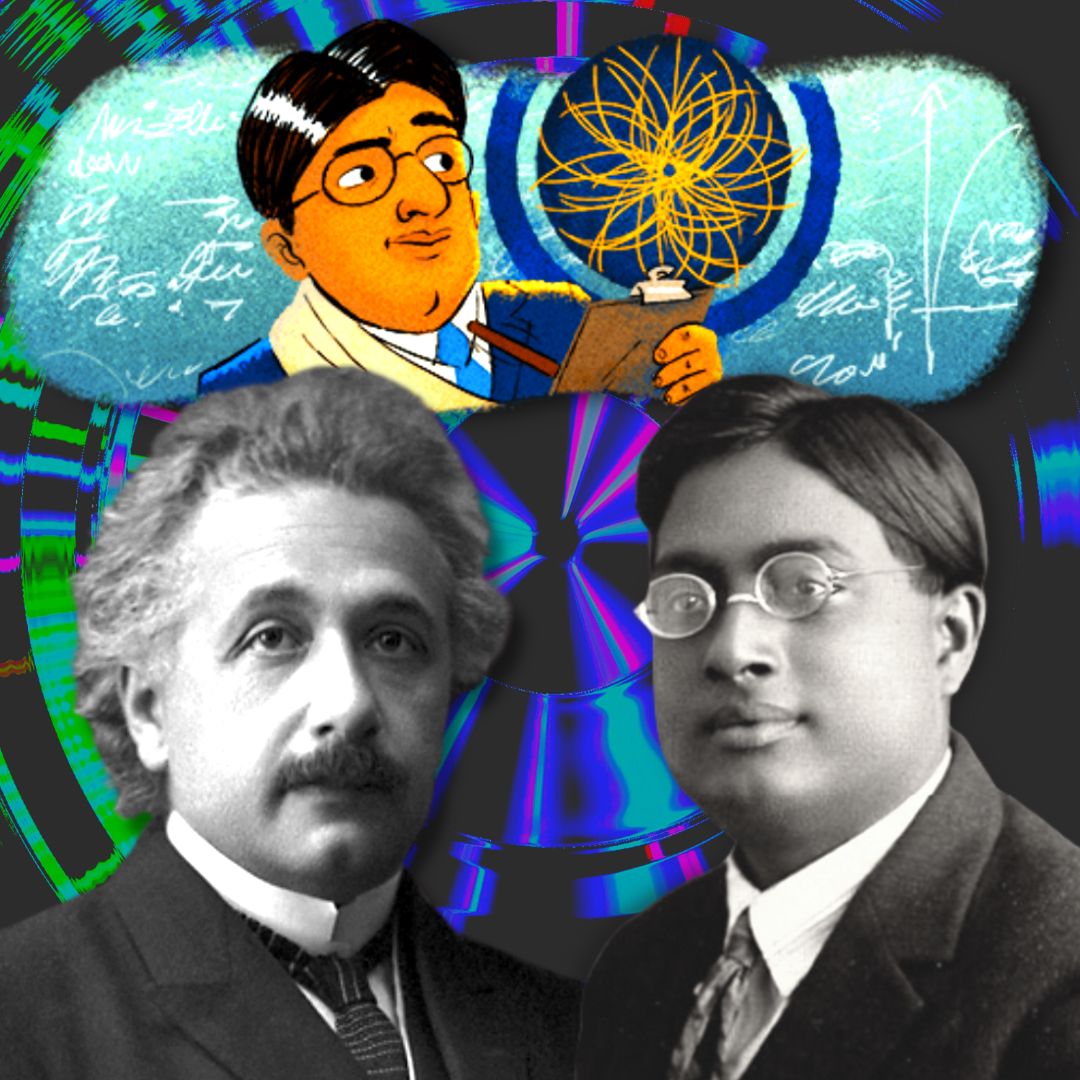Context:
Satyendra Nath Bose, a brilliant physicist from Calcutta (now Kolkata), emerged onto the physics scene in 1924, amidst a transformative period in scientific history. This was a time when the foundations of physics were undergoing profound shifts, with the emergence of quantum theory challenging classical understanding. Bose's contributions, particularly his groundbreaking work on the behavior of photons and the development of quantum statistics, played a pivotal role in shaping modern physics. Despite initial challenges and rejections, Bose's collaboration with Albert Einstein propelled his ideas into the scientific mainstream, forever altering our understanding of the microscopic world. As we commemorate the centenary of Bose's seminal discovery, it's essential to delve into the details of his life, work, and enduring legacy.
Early Years and Academic Journey:
Born in 1894, Satyendra Nath Bose displayed remarkable mathematical aptitude from a young age. His educational journey led him to Presidency College in Calcutta, where he crossed paths with another promising physicist, Meghnad Saha, forging a lifelong friendship. Amidst a rapidly evolving scientific landscape, characterized by Einstein's theory of relativity and the dawn of quantum mechanics, Bose and Saha embraced the challenges of mastering new concepts and languages, particularly German, which was the primary medium for cutting-edge physics literature. Their collaboration extended to translating Einstein's seminal papers on general relativity into English, demonstrating their commitment to disseminating knowledge in their academic community. Despite the linguistic and conceptual barriers, Bose and Saha emerged as early adopters of quantum theory, laying the groundwork for their future contributions.
Planck's Law and Quantum Puzzle:
One of the central mysteries confronting physicists at the turn of the 20th century was the nature of black-body radiation, encapsulated by Planck's law. While Planck's formula provided a remarkably accurate description of experimental data, its derivation posed a significant challenge within the framework of classical physics. Bose, during his tenure at Dhaka University, embarked on a quest to unravel the underlying principles governing black-body radiation. Dissatisfied with existing explanations, Bose embarked on a fresh approach, drawing inspiration from recent developments in quantum theory, notably Einstein's insights into the photoelectric effect and Compton's experiments on light scattering. By divorcing the problem from classical assumptions and focusing on the statistical distribution of energy quanta, Bose achieved a breakthrough: a rigorous derivation of Planck's law solely based on quantum principles. This seminal work not only elucidated the statistical nature of photons but also laid the foundation for the field of quantum statistics, a cornerstone of modern physics.
Bose-Einstein Statistics and Particle Classification:
Bose's pioneering derivation of Planck's law unveiled a profound connection between statistical mechanics and quantum theory, culminating in the formulation of Bose-Einstein statistics. This statistical framework, later refined by Paul Dirac, categorized fundamental particles into two distinct classes: bosons and fermions. The implications of Bose's work extended far beyond black-body radiation, permeating diverse areas of physics, from the behavior of gases to the properties of condensed matter systems. At its core, Bose-Einstein statistics challenged conventional notions of particle behavior, introducing concepts such as particle indistinguishability and the possibility of particles occupying the same quantum state simultaneously. This fundamental insight paved the way for groundbreaking discoveries in quantum physics, including the prediction and subsequent observation of phenomena like Bose-Einstein condensation. Bose's intellectual legacy, embodied in his eponymous statistics, continues to inspire generations of physicists, shaping our understanding of the quantum realm and its myriad phenomena.
Legacy and Conclusion:
Satyendra Nath Bose's contributions to physics transcend mere equations and theorems; they represent a paradigm shift in our perception of the fundamental fabric of reality. Despite his modest output in terms of publications, Bose's indelible imprint on the field of quantum mechanics is unmistakable. His singular achievement, the derivation of Planck's law and the subsequent development of Bose-Einstein statistics, catalyzed a revolution in theoretical physics, ushering in an era of unprecedented insight into the quantum realm. As we commemorate the centenary of Bose's seminal discovery, it's imperative to recognize not only the brilliance of his intellect but also the resilience and perseverance that fueled his scientific journey. Satyendra Nath Bose may have likened himself to a fleeting comet, but his luminous legacy continues to illuminate the path for future generations of physicists, guiding them towards new frontiers of understanding in the ever-expanding universe of knowledge.
|
Probable Questions for UPSC Mains Exam 1. Discuss the significance of Satyendra Nath Bose's collaboration with Albert Einstein in shaping the trajectory of quantum theory during the early 20th century. How did Bose's work on photon behavior contribute to the foundational principles of quantum mechanics? (10 marks, 150 words) 2. Explore the role of Satyendra Nath Bose in elucidating the statistical underpinnings of Planck's law of black-body radiation. How did Bose's derivation of the law pave the way for the development of quantum statistics and its implications for our understanding of fundamental particles? (15 marks, 250 words) |
Source - The Hindu







